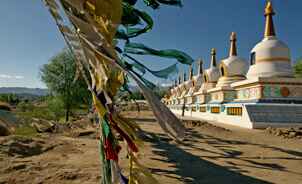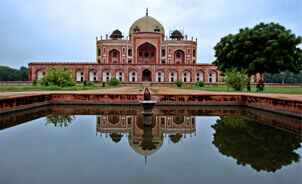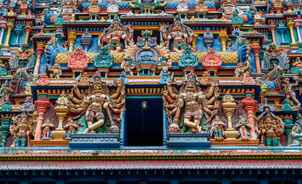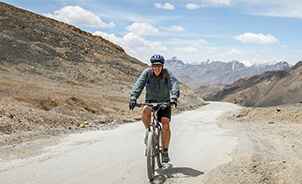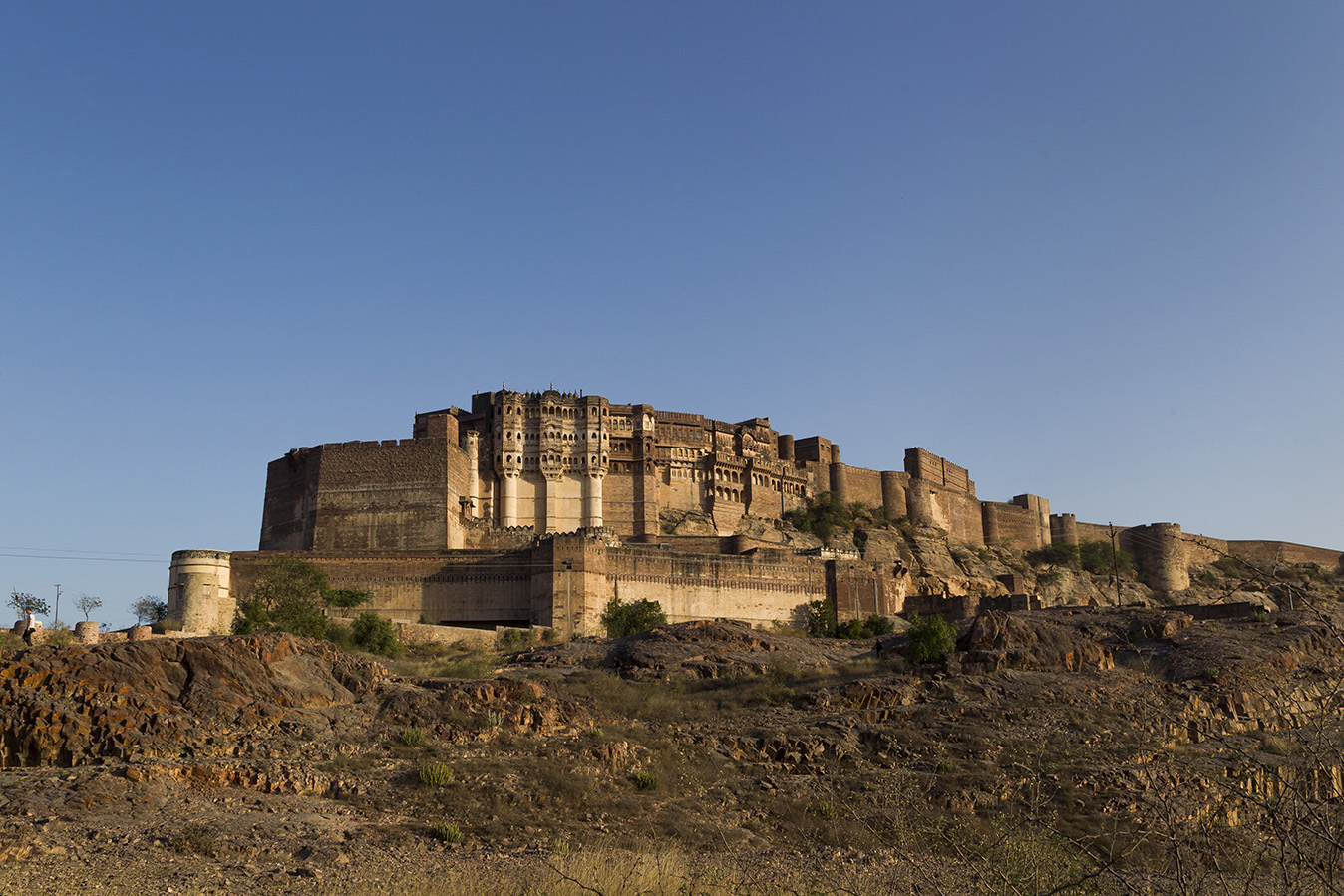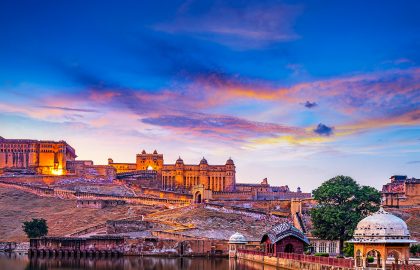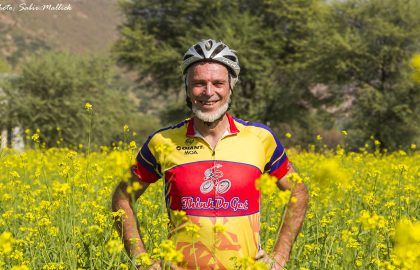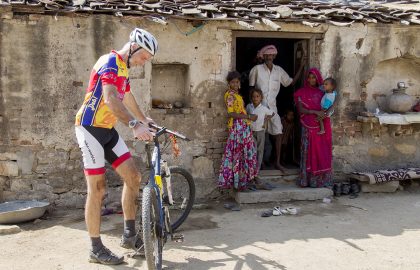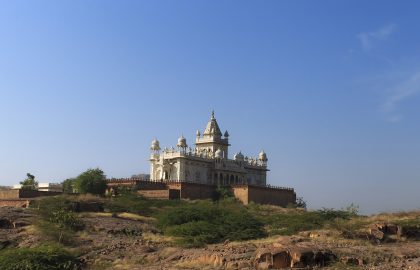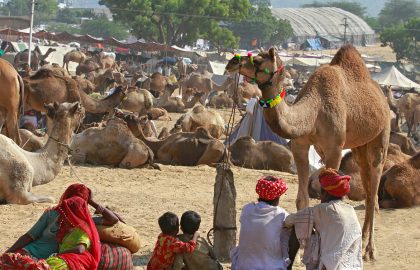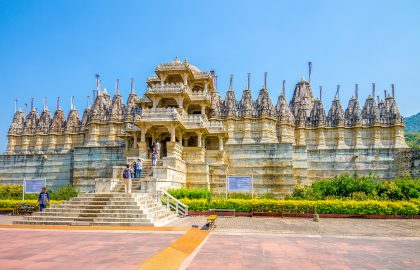For anyone on a Cycling Holiday in Rajasthan, the village of Bhadrajun looks just a touch out of the ordinary at first glance. But dig a little deeper into its history and you find fascinating tales dating back to thousands of years.
Just how did this village in southern Rajasthan manage to stay nondescript and evade the eye of many travelers on Indian holiday trips is anyone’s guess. Perhaps the glare of the crowd-pulling tourist hotspots of Rajasthan knocks it off the itinerary of those who want a quick and snappy tour of the state without going off the beaten track. Perhaps the surrounding hills that have naturally concealed Bhadrajun from the eye of invaders for centuries have also veiled it from the vacationers on Rajasthan holiday.
Whatever the reason, Bhadrajun is a little known village that surely merits a visit, even if it happens to be just a short stopover, as it was for me who is on this wonderful Rajasthan Short Cycling Tour with a bunch of other holidayers from different parts of the world.
Leaving behind the village of Bhenswara on the ninth day of our private guided Rajasthan cycling trip, we set out for what was to be a 65 km long ride to Bhadrajun. The day was cloudy, the road uneven, partly metaled, with some short ascents and quick descents. The mood of our Rajasthan cycling group was upbeat from the previous evening’s performance of a Kalbelia dance, and we cycled on humming the rustic tunes which seem to haunt us more and more.
We hadn’t gone further than 30 km when the tyre of one of the cycles went flat. While we waited in a grove of trees as the support staff fixed the cycle, the tour guide got talking of his own accord and filled us in on the historical importance of the village of Bhadrajun, our destination for the day.
An interesting romantic episode from the great epic The Mahabharata played out in the village of Bhadrajun, the tour guide of our Rajasthan biking adventure trip told us.
According to the legend, the five Pandava brothers, after losing their kingdom in a dice game, were sentenced to 13 years of vanvaas (exile) by the cunning Kauravas. During the exile, the five brothers had to live incognito (without being recognized by anyone), failing which they would have to serve another 13 years of vanvaas. Arjuna, the ultimate archer, spent the final year of the exile in Lord Krishna’s kingdom Dwarka disguised as a saint. There, he fell in love with Krishna’s sister Subhadra. The affection was mutual. But there was a catch. The marriage between the two would have revealed Arjuna’s true identity and sentenced him to a repeat exile.
Krishna came up with a quick solution: elopement. He incited Arjuna to elope with his sister Subhadra. The two lovers made good their escape on a chariot, much to the anger of Balarama, Krishna’s mercurial brother. After a toilsome journey of three days and two nights, Arjuna and Subhadra found refuge in a valley surrounded by hills on three sides. Here, they were married off by a priest. The place was thus named Subhadrajun, an enmeshing of the names of Subhadra and Arjun. Later, it was shortened to Bhadrajun.
To this day, the tour guide of our Indian cycling vacation told us, there exists an old temple dedicated to Subhadra in the vicinity of Bhadrajun.
But the Subhadra-Arjun nuptials weren’t the end of this village’s tryst with history. Owing to its strategic location, Bhadrajun was coveted by many kingdoms over the centuries and millennia and became a ground for many battles and wars. In the 16th century, a fort was constructed on top of the hill to ward off the invaders. Its walls were 20-30 feet high and 10 feet wide with a number of bastions for canons. Today, the fort has been converted into a luxury hotel and is run by the last scion of the dynasty of Raja Ratan Singh Rathore, the first ruler of Bhadrajun in the 16th century. It provides comfortable stay while giving guests an up-close experience of Rajasthan’s regality.
The strategic location of Bhadrajun became apparent as our Rajasthan biking expedition group arrived there in the evening, having cycled a distance of 65 km through a rugged landscape dotted with cacti, thorny shrubs, bushes and straggly trees. The village itself was situated in a horseshoe-shaped valley. We could approach it only from the east, as it was enclosed by hills on three other sides, making it a perfect place to hide, seek refuge, or defend oneself militarily.
The village of Bhadrajun comprised of scores of hutments, hovels and cemented houses. The most conspicuous building was the fort, painted in light shade of ochre and a much humbler structure than the majestic fort of Kumbhalgarh that our Rajasthan biking trip group visited a few days previous.
On our special request, we were allowed a short tour of the Bhadrajun fort, now a heritage hotel. The fort was bedecked with age-old artifacts, regalia and weaponry. It was designed and built in the style of classical Marwari architecture, which, though not grand or opulent, is simple, elegant and utilitarian. We were even granted a few minutes of audience with the royal scion and the present incumbent of the fort-cum-hotel.
Raja Karanveer Singh Rathore, the 17th successor in the royal line, greeted us with warmth. He was clad in a heavily sequined and studded sherwani and a purple turban. For a royal descendent, he looked a middle aged man of easy manners and polite speech. He spoke a bit about the long royal history of the Bhadrajun fort. Sadly, all the rooms were already taken by a group of foreigners on Indian vacation in Rajasthan and the raja (king) expressed his regret over having no accommodation available for us.
This kind of humility from a royal is hard to come by in this day and age. We told the king that we hadn’t planned on staying at the hotel in the first place. We intended to drive to Jodhpur for overnight.We all left Bhadrajun with a heavy heart, knowing that we were leaving the rustic, rural Rajasthan behind on our Indian cycling tour and were headed for the cities of Jodhpur and Jaipur.
All good things come to an end and make way for something that might even be better. With this thought we said goodbye to Bhadrajun, goodbye to rural Rajasthan, and drove on to Jodhpur late in the evening.
The more we drove on the more we cheered up and it wasn’t long before we were actually looking forward to exploring Jodhpur.

